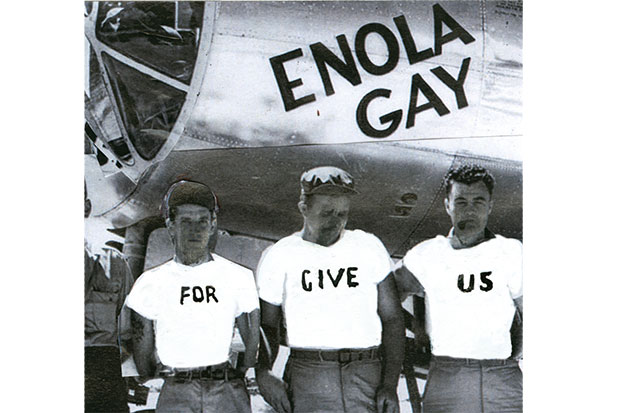Tokyo is visual chaos everywhere, the antithesis of the Japanese interior. It is a multilevel jumble of overpasses, neon signs, electric pylons, railway lines and traffic lights. The pavements are empty, not a pedestrian human in sight. And the leader of North Korea is still lobbing ballistic missiles right over Japan and cackling away about his collection of nuclear warheads. Drinking beer in a sushi bar in Ginza on our first night, I ask my neighbour whether people are worried by the behaviour of the lunatic child across the water. ‘No,’ he replies. ‘I am far more frightened by our prime minister. He really is dangerous.’ Shinzo Abe is proposing to repeal the clause in Japan’s constitution that bans recourse to war.
We are travelling through Japan to present a film and a concert, both inspired by the atomic bombing 71 years ago of Hiroshima and Nagasaki. The film, Snake Dance, has toured the world, and has been shown on four out of five continents. Twinning the screening with a concert is the idea of Manu Riche, its director. The third member of our party, the great Japanese pianist Jun Kanno, reproduces a programme performed at Los Alamos National Laboratory in America by the physicist Otto Frisch to entertain his colleagues in the days before the bombs were dropped. Frisch, a brilliant and courageous scientist, was also a bit of a show-off: his programme includes Domenico Scarlatti’s Sonata in D minor, Beethoven’s Piano Sonata No. 8, and Ballade No. 3, Op. 47 in A flat major by Chopin.
Kyoto, with its numerous temples, gardens and castles, remains the cultural and spiritual centre of Japan. Compared with Tokyo it has a relaxed and welcoming atmosphere. There are streets full of the traditional wooden houses with their paper walls.








Comments
Join the debate for just £1 a month
Be part of the conversation with other Spectator readers by getting your first three months for £3.
UNLOCK ACCESS Just £1 a monthAlready a subscriber? Log in